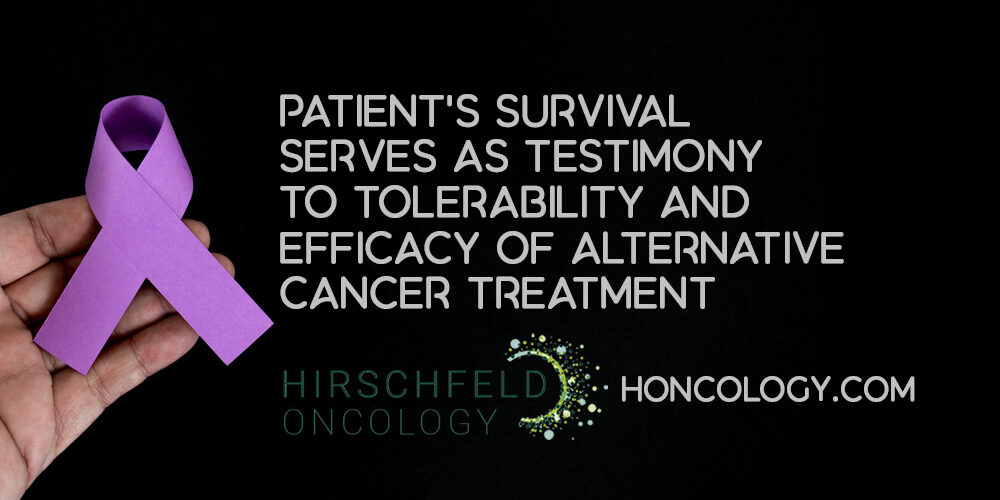Introduction to Drug Repurposing in Oncology
Understanding Drug Repurposing
Drug repurposing refers to the process of identifying new therapeutic uses for existing medicines that have already been approved for other conditions. This strategy leverages known safety profiles and pharmacokinetic characteristics of these drugs, enabling faster and more cost-effective development compared to creating new drugs from scratch.
Advantages in Cancer Therapy
In oncology, repurposing offers significant advantages such as reducing the typical drug development timeline from over 10 years to approximately 6 years and cutting costs substantially—from billions to hundreds of millions of dollars. By using existing drugs, developers can skip early-phase safety trials, accelerating clinical application.
Critical Role in Cancer Treatment
Cancer treatment benefits extensively from drug repurposing due to the complexity and heterogeneity of tumors. Many repurposed drugs target fundamental cancer hallmarks like uncontrolled cell proliferation, resistance to cell death, metabolic reprogramming, and immune evasion. Examples include drugs like metformin, celecoxib, and statins that were originally indicated for non-cancerous diseases but show promising anti-cancer effects.
Current Research Momentum
Research in drug repurposing for cancer is rapidly expanding worldwide, with notable contributions from the United States and China. Publications and clinical trials exploring various repurposed drugs have surged, emphasizing drug screening methods, computational analyses, and nanomaterial-based delivery systems. Scientific journals such as 'Cancers' and 'Oncotarget' lead in disseminating these findings, reflecting the growing scientific interest and potential impact of repurposed drugs in oncology.
This growing momentum highlights repurposing as a promising, practical solution to address unmet oncology needs effectively and affordably.
The Principles and Promise of Drug Repurposing in Cancer Care
What is drug repurposing and why is it important in cancer treatment?
Drug repurposing means finding new uses for existing, often clinically approved drugs beyond their original medical purpose. This approach is important in cancer therapy because it can significantly speed up drug development since the safety profiles and pharmacokinetics of these drugs are already established (Drug repurposing for cancer therapy).
Concepts of drug repurposing
Repurposed drugs are evaluated through experimental models, computational methods, and preclinical screening to identify new cancer targets. This strategy leverages drugs' known effects on biological pathways, tumor metabolism, immune responses, and cancer hallmark processes such as proliferation, apoptosis, and angiogenesis (Experimental drug repurposing methods, Computational drug repurposing approaches, Targeting cancer hallmarks with repurposed drugs.
Examples of successfully repurposed drugs
- Arsenic trioxide and all-trans retinoic acid: Both have been approved by the FDA to treat acute promyelocytic leukemia (FDA-approved leukemia drugs, Existing clinically approved drugs in cancer treatment.
- Thalidomide: Originally a sedative, now approved for multiple myeloma due to its immunomodulatory and antiangiogenic properties (Thalidomide repurposed for multiple myeloma).
These cases show how old drugs can find new life combating cancer, often with shorter development timelines (Benefits of drug repurposing).
Advantages over traditional drug development
- Known safety profiles: Existing clinical data allows repurposed drugs to bypass some early-phase safety trials (FDA-approved drugs for new cancer uses.
- Cost-effectiveness: Development costs and timelines are significantly reduced; traditional drug development can exceed $2.5 billion and take over a decade, while repurposing may take around 6 years and cost a fraction (Reducing development costs in cancer drugs.
- Faster clinical translation: The ability to quickly move to clinical trials helps address urgent unmet medical needs (Clinical trials for repurposed cancer drugs.
Drug repurposing thus presents a promising, practical, and sustainable approach to expanding cancer treatment options, enhancing accessibility, and potentially improving patient outcomes worldwide (Affordable cancer care options, Sustainable innovation in oncology.
Targeting Hallmarks of Cancer Through Repurposed Drugs

How do repurposed drugs target cancer hallmarks?
Cancer progression is characterized by several hallmarks such as sustained proliferation, evasion of cell death, induction of angiogenesis, and immune system evasion. Repurposed drugs offer promising new approaches by targeting these fundamental processes using existing medications with known safety profiles.
Inhibiting Proliferation
Salidroside, a compound derived from Rhodiola rosea, suppresses cancer cell proliferation by inhibiting the PI3K/AKT signaling pathway which is crucial for cell growth and survival. By disrupting this proliferative signaling, salidroside effectively slows cancer cell division and tumor growth.
Inducing Cell Death
Triptolide stands out for its ability to induce non-apoptotic forms of cell death such as pyroptosis and necrosis in tumor cells. Unlike traditional therapies that primarily trigger apoptosis, triptolide’s mechanism offers an alternative way to eliminate cancer cells that may resist standard treatments.
Altering Tumor Metabolism and Microenvironment
Leflunomide targets cancer metabolism by inhibiting dihydroorotate dehydrogenase (DHODH), impairing pyrimidine synthesis necessary for DNA replication and cell proliferation. This metabolic disruption can suppress tumor growth and enhance chemotherapy effectiveness.
Suppressing Inflammation and Angiogenesis
Celecoxib, initially used as an anti-inflammatory drug, inhibits cyclooxygenase-2 (COX-2), thereby reducing inflammatory pathways that support tumor survival and angiogenesis. By limiting blood vessel formation and inflammatory signaling, celecoxib can decrease tumor progression and resistance to chemotherapy.
Through these diverse mechanisms acting on core cancer hallmarks, repurposed drugs can provide multi-faceted attack strategies that potentially improve cancer treatment outcomes while benefiting from established drug safety and pharmacokinetics.
Methodologies in Drug Repurposing for Cancer

What research methods are used to identify and test repurposed drugs?
Drug repurposing for cancer therapy leverages a blend of experimental and computational approaches to identify and validate effective drug candidates.
Experimental Methods
One primary approach involves the use of organoid and tumoroid models in cancer research. These are three-dimensional cultures derived from patient tumor tissues that replicate many aspects of tumor architecture and behavior. They provide a platform for phenotypic screening, where drugs are tested for their effects on cancer cell proliferation, survival, and resistance within a more physiologically relevant environment.
These models better mimic the complexity of tumors than traditional two-dimensional cell cultures, capturing cellular heterogeneity and some microenvironmental factors. However, limitations of organoid models exist, such as the incomplete representation of immune system components and challenges in fully recapitulating tumor heterogeneity, which may affect predictive accuracy.
Computational Approaches
Advancements in computational biology have introduced powerful tools to accelerate drug repurposing efforts. Techniques include:
- Molecular docking in cancer drug discovery: predicting how existing drugs bind to target proteins relevant in cancer pathways.
- Network analysis for repurposed drugs: mapping drug-target, protein-protein, and signaling networks to find critical intervention points.
- Machine learning in oncology drug discovery: identifying patterns from large datasets to predict new drug-cancer associations.
These in silico methods enable rapid screening of multiple compounds and help prioritize candidates for experimental validation, thus reducing time and costs.
Integrative Advantages and Challenges
Combining experimental and computational methods offers a complementary framework. While computational techniques provide high-throughput predictions, experimental organoid models validate efficacy in biologically relevant settings.
Despite the promise, challenges like tumor heterogeneity, absence of immune and stromal components in models, and translating in vitro findings to clinical success remain hurdles. Continuous refinement and novel hybrid methodologies are crucial to enhance the reliability of repurposed drug discovery in oncology.
Repurposed Drugs Modulating Tumor Metabolism and Microenvironment
How do repurposed drugs affect tumor metabolism and microenvironment?
Repurposed drugs impact tumor metabolism by targeting specific metabolic pathways that cancer cells rely on for growth and survival. For instance, metformin, primarily an anti-diabetic drug, suppresses cancer stem cell renewal and inhibits signaling pathways such as WNT, which are crucial for cellular metabolism and tumor progression. Disulfiram's role in cancer therapy, originally used to treat alcoholism, disrupts energy metabolism in cancer cells by inhibiting glycolysis and inducing oxidative stress, thereby promoting cell death.
Statins in cancer clinical trials, normally prescribed for lowering cholesterol, inhibit the enzyme HMG-CoA reductase and help restore tumor suppressor activities such as P53 function. This inhibition affects not just cancer cell metabolism but also modulates the tumor microenvironment, reducing immune evasion and altering inflammatory processes associated with tumor growth.
Additionally, these repurposed drugs influence the tumor microenvironment by modifying immune cell responses. For example, oleanolic acid and antitumor immunity adjusts immune regulation by balancing Treg and Th17 cells and influencing PD-L1 expression, thus enhancing antitumor immunity. Meteoric advances in microbiome research have shown that compounds like evodiamine modulating gut microbiota in cancer can modulate gut microbiota, leading to improved immune responses against tumors. This cross-talk between metabolic reprogramming and immune modulation highlights their combined importance in tumor progression control.
In summary, repurposed drugs exert dual effects by disrupting cancer metabolism and reshaping the tumor microenvironment, which together can impede tumor growth and potentially improve therapeutic outcomes.
Emerging Repurposed Compounds with Unique Anticancer Mechanisms

What are some novel repurposed compounds and their mechanisms in cancer treatment?
Several repurposed compounds with distinct mechanisms have emerged as promising agents in cancer therapy. Salidroside, a compound derived from the Rhodiola rosea plant, inhibits cancer cell proliferation by targeting the PI3K/AKT signaling pathway, thereby reducing tumor growth.
Triptolide, a natural product extracted from Tripterygium wilfordii, induces non-apoptotic cell death forms such as pyroptosis and necrosis in tumor cells. This unique mode of cell death offers a potential to overcome resistance to traditional apoptosis-inducing drugs.
Oleanolic acid, a plant-derived triterpenoid, influences antitumor immunity and epigenetic regulation. It can modulate the balance of regulatory T cells and Th17 cells and affect PD-L1 expression, making it a candidate for immunotherapy combinations.
Epigallocatechin 3-gallate (EGCG), a green tea polyphenol, inhibits telomerase activity and alters DNA repair pathways. These actions not only help suppress tumor growth but also enhance the efficacy of radiotherapy by sensitizing cancer cells to radiation damage.
Dihydroartemisinin, derived from the antimalarial artemisinin, exhibits anti-angiogenic effects by modulating NF-κB signaling and reactive oxygen species (ROS) production, thereby limiting tumor blood vessel formation crucial for cancer progression.
Mebendazole, an anti-helminthic drug, disrupts microtubule function impacting mitosis and inhibits metastasis, demonstrating anecdotal success in managing metastatic tumors.
Genistein, a phytoestrogen isoflavone, influences DNA damage responses and sensitizes tumors to radiotherapy, enhancing treatment effectiveness.
Evodiamine, an alkaloid from traditional Chinese medicine, modulates the gut microbiota and immune responses, highlighting the critical role of the microbiome in cancer therapy.
These compounds illustrate the diverse biological pathways repurposed drugs can target, offering new therapeutic strategies to enhance cancer treatment outcomes.
Nanotechnology Enhancing Drug Delivery of Repurposed Agents

How does nanotechnology enhance delivery and efficacy of repurposed cancer drugs?
Nanotechnology significantly improves the delivery and efficacy of repurposed cancer drugs by using specialized nanoparticle-based drug delivery systems including liposomes, polymeric nanoparticles, and metallic nanoparticles designed to transport drugs directly to tumor cells.
Liposomes provide a biocompatible lipid-based carrier that encapsulates drugs, protecting them from degradation and enhancing circulation time. Polymeric nanoparticles offer controlled drug release and enhanced stability, while metallic nanoparticles add features like imaging and thermal therapy, enhancing targeted treatment (Nanoparticle delivery of repurposed drugs).
Advantages in targeting cancer cells and reducing toxicity
These nanocarrier drug delivery systems enable precise targeting of cancer cells, often by exploiting tumor-specific markers or the enhanced permeability and retention effect. This selective delivery concentrates the drug at the tumor site, maximizing the therapeutic effect and minimizing toxicity to healthy tissues (Nanomaterials for drug delivery in cancer.
As a result, patients may experience fewer side effects compared to conventional chemotherapy. Nanoparticles also help circumvent drug resistance mechanisms by improving cellular uptake and overcoming efflux pumps (Challenges in drug repurposing for cancer.
Examples in preclinical and clinical settings
Preclinical studies have shown that repurposed drugs delivered with nanotechnology, such as Metformin's impact on cancer stem cells loaded nanoparticles or liposomal formulations of arsenic trioxide, can significantly inhibit tumor growth with reduced systemic toxicity (Existing clinically approved drugs in cancer treatment.
Clinical trials are assessing these agents in various cancers, including formulations aimed at improving pharmacokinetics and reducing adverse effects (Clinical trials on repurposed cancer drugs. These advances highlight the potential of nanotechnology-assisted drug repurposing to optimize cancer therapy and improve patient outcomes.
Clinical Trials and Translational Challenges in Drug Repurposing

Examples of Clinical Trials Involving Repurposed Drugs
Several repurposed drugs have advanced into clinical trials for cancer therapy, providing promising early data. Statins, commonly used for cholesterol management, are being tested for their ability to improve survival outcomes and enhance immune responses in cancers such as head and neck tumors. Beta blockers like propranolol are under investigation for multiple myeloma, where they may sensitize tumor cells to treatment and potentially improve patient survival. Psychotropic drugs, originally prescribed for neurological conditions, are at early research stages targeting acute myeloid leukemia, showing proof-of-concept at the cellular level. Among metabolic agents, metformin is the most extensively studied in cancer clinical trials, with evaluations across multiple cancer types aiming to inhibit stem cell renewal and tumor growth.
Barriers to Clinical Translation
Despite encouraging preclinical and early clinical data, drug repurposing faces several significant challenges that slow clinical adoption. Regulatory hurdles complicate approval processes since repurposed drugs may lack strong patent protection, reducing attractiveness for commercial investment. This limited patent life or absence of exclusivity dampens pharmaceutical industry interest in funding costly clinical trials. Additionally, optimizing effective dosing is challenging; in vitro active concentrations sometimes exceed those safely achievable in humans, raising concerns about toxicity. Clinical trials also encounter difficulties in design, recruitment, and funding, especially for large randomized controlled trials needed to generate robust evidence.
Importance of Randomized Controlled Trials
To firmly establish efficacy and safety of repurposed drugs in cancer, randomized controlled trials (RCTs) are essential. These trials help determine optimal dosing regimens, assess combination strategies, and evaluate treatment benefits versus risks in diverse patient populations. The lack of sufficient RCTs currently limits widespread guideline adoption of repurposed agents despite promising theoretical and preliminary clinical evidence. Investment in high-quality, well-powered RCTs will be pivotal to overcome translational barriers, drive regulatory approvals, and enable integration into standard cancer care (Winship Cancer Institute research.
Targeting Cancer Stem Cells with Repurposed Medicines
How does drug repurposing target cancer stem cells?
Cancer stem cells (CSCs) play a pivotal role in tumor progression, metastasis, and resistance to conventional therapies. These cells can self-renew and differentiate, making them crucial drivers of cancer relapse and treatment failure.
Drug repurposing combats CSCs by utilizing existing drugs that interfere with key CSC signaling pathways such as cancer stem cell signaling pathways (Wnt/β-catenin, Notch, Hedgehog, TGF-β). Repurposed agents like aspirin as a repurposed anti-cancer drug, all-trans retinoic acid (ATRA) in cancer therapy, and metformin in cancer stem cell therapy have shown efficacy in inhibiting these pathways, thereby targeting the root of tumor growth and resistance.
For example, aspirin inhibits inflammatory signals that support CSC survival; ATRA promotes differentiation of CSCs reducing their stemness; metformin suppresses CSC renewal by modulating the Wnt/β-catenin pathway and metabolic processes.
Combination therapies that integrate repurposed drugs with conventional chemotherapy or targeted treatments have demonstrated enhanced efficacy by eradicating both CSCs and the bulk tumor cells. This multipronged approach helps overcome drug resistance and decrease recurrence.
Additionally, nanoparticle-based drug delivery systems are being developed to improve the specificity and pharmacokinetics of CSC-targeted repurposed drugs. These advanced carriers reduce toxicity and enhance drug accumulation in tumor sites, maximizing therapeutic outcomes.
Together, these strategies highlight drug repurposing in cancer therapy as a promising, cost-effective platform to improve cancer therapy by specifically targeting cancer stem cells and addressing critical challenges in treatment resistance and relapse.
Repurposing Metabolic Disease Drugs to Combat Cancer

How are drugs for metabolic diseases repurposed for cancer treatment?
Cancer is increasingly understood as a metabolic disease because tumor cells undergo metabolic reprogramming to support rapid proliferation and survival. This reprogramming shares similarities with the altered metabolic pathways seen in diabetes and cardiovascular diseases (CVD).
Drugs originally developed to manage metabolic disorders, such as metformin for type 2 diabetes and statins for hypercholesterolemia, show promising anti-cancer effects. These medications target cancer cell metabolism, disrupting critical pathways including energy production, DNA repair, programmed cell death (apoptosis), and immune response regulation.
Metformin acts primarily by activating the AMPK/mTOR pathway, leading to inhibited cancer cell growth and reduced cancer stem cell renewal. Statins inhibit HMG-CoA reductase, which affects cholesterol synthesis and has downstream effects on cell proliferation and tumor progression.
Epidemiological studies reveal that patients using metformin and statins demonstrate a lower incidence of certain cancers and improved progression-free survival rates. These findings are bolstered by preclinical and clinical trials, making their repurposing a compelling strategy due to the existing safety data and known pharmacokinetic profiles of these drugs (Drug repurposing for cancer treatment).
Advantages of repurposing metabolic drugs for cancer
- Faster clinical development because safety profiles are already established.
- Lower research and development costs compared to creating new oncologic agents.
- Potential to address mechanisms common to metabolic diseases and cancer.
- Combination with existing therapies to enhance treatment efficacy.
By leveraging the mechanistic overlap between metabolic diseases and cancer, repurposed metabolic drugs offer a promising and cost-effective approach to cancer prevention and therapy.
Enhancing Immunotherapy with Repurposed Drugs
How can repurposed drugs improve cancer immunotherapy?
Repurposed drugs have shown promising potential to enhance the effectiveness of cancer immunotherapy, particularly when combined with checkpoint inhibitors. Beta blockers, histamine 1 blockers, and nonsteroidal anti-inflammatory drugs (NSAIDs help in modulating immune responses by reducing inflammation and suppressing pathways that tumors use to evade immune detection.
These drugs can improve immune activation against tumor cells, thereby boosting the efficacy of checkpoint blockade therapies. For example, beta blockers may reduce stress-related signaling that suppresses antitumor immunity, while histamine blockers may positively influence immune cell functions. NSAIDs also contribute by diminishing tumor-associated inflammation and enhancing response to immunotherapy.
Clinical investigations and future research directions
Clinical trials at centers like the Winship Cancer Institute of Emory University are actively exploring combinations of these repurposed drugs with checkpoint inhibitors. These studies aim to identify the optimal timing and dosing strategies to maximize immune response and patient survival. Research is also focusing on selecting appropriate patient populations who would benefit the most from such combination therapies.
Future investigations will delve deeper into understanding how these repurposed agents modulate the tumor microenvironment and immune checkpoints. This could pave the way for personalized treatment plans that combine immunotherapy with well-tolerated, affordable drugs to overcome resistance and improve long-term outcomes in cancer patients.
Addressing Global Health Equity Through Drug Repurposing

How does drug repurposing impact global cancer care equity?
Drug repurposing offers a transformative strategy to enhance global health equity in cancer care by making advanced therapies more affordable and accessible, especially in low- and middle-income countries (LMICs). Using off-patent and generic drugs reduces both the high costs and lengthy timelines associated with developing new cancer treatments. This approach allows LMICs, which often face financial and infrastructural barriers, to benefit from effective cancer therapies that would otherwise be out of reach.
However, barriers persist that limit widespread adoption. Key challenges include a lack of commercial interest due to low profitability with off-patent drugs, limited availability of generics in some regions, complex regulatory requirements, and fragmented funding landscapes. Additionally, resource constraints and competition for patient recruitment in clinical trials hamper progress.
To overcome these obstacles, several policy and funding strategies are recommended. Establishing dedicated funding mechanisms such as surcharges on generic drug sales can support repurposing research. Educational campaigns and advocacy are crucial to raise awareness among regulators, healthcare providers, and patients. Strong policy safeguards must be implemented to prevent patent abuses that could restrict affordable access. Moreover, international cooperation and support for regionally led research programs can ensure context-specific relevance and equitable adoption.
Together, these approaches aim to expand the benefits of drug repurposing globally, making innovative and affordable cancer treatments accessible to underserved populations while promoting sustainable healthcare innovation.
Historical Perspectives and Future Horizons in Drug Repurposing

What is the historical context and future outlook for cancer drug repurposing?
Drug repurposing in cancer therapy has roots tracing back to early examples like chemotherapeutics from mustard gas, including chlorambucil and busulfan, which were initially derived from mustard gases and later applied successfully as chemotherapeutics. These pioneer drugs demonstrated that existing compounds, even those not originally intended for cancer, could be adapted for oncology purposes, setting a precedent for today's drug repurposing strategies in oncology.
The landscape of drug repurposing has been transformed by advances in genomic technologies and computational tools. Omics approaches paired with single-cell sequencing allow detailed understanding of tumor heterogeneity, revealing novel drug targets. Machine learning and network analysis facilitate screening and prediction of promising candidates, accelerating the identification process beyond traditional trial-and-error methods.
Emerging drugs and innovative strategies now focus on diverse avenues such as targeting alternative splicing events in prostate cancer, exploring rare tumors like neuroendocrine cancers, and employing nanoparticle-based drug delivery systems to enhance specificity and reduce toxicity. Additionally, targeting tumor microenvironment modulation and cancer stem cells with repurposed agents provides new therapeutic angles.
Success in this field hinges on multidisciplinary collaboration encompassing academia, pharmaceutical industry, regulatory agencies, and patient advocacy groups. Coordinated efforts ensure that promising preclinical findings translate efficiently into clinical trials, overcoming regulatory, patent, and dosing challenges.
Looking ahead, drug repurposing holds significant promise to diversify cancer treatment options, reduce development costs, and improve patient outcomes by leveraging existing knowledge in innovative ways.
Innovative Delivery Approaches and Combination Therapies

How are repurposed drugs integrated with existing therapies?
Repurposed drugs are increasingly being combined with conventional chemotherapy and radiotherapy to improve treatment efficacy. For example, genistein sensitizing tumors to radiotherapy enhances tumor sensitivity to radiotherapy by affecting DNA damage response pathways. Similarly, antipsychotic drugs such as haloperidol in cancer treatment and trifluoperazine anti-neoplastic effects have shown synergistic effects when used alongside chemotherapeutic agents like temozolomide and doxorubicin, helping to overcome drug resistance and induce apoptosis in cancer cells.
Combination therapies take advantage of repurposed drugs' unique mechanisms to disrupt cancer cell proliferation, survival, and resistance pathways while enhancing the effects of standard treatments. This integration has the potential to improve patient outcomes by increasing tumor responsiveness and reducing relapse.
A novel model gaining attention is home chemotherapy models in oncology. This approach offers a safer and more cost-effective alternative to hospital-based chemotherapy. It allows for optimized dosing and scheduling of repurposed drugs combined with conventional treatments, improving convenience and potentially reducing adverse effects.
Overall, these integrated therapeutic strategies illustrate how repurposed drugs can be effectively combined with existing cancer treatments to enhance antitumor activity and improve patient quality of life.
Conclusion: The Transformative Potential of Drug Repurposing in Oncology
Benefits and Challenges
Drug repurposing in cancer therapy presents a transformative approach by leveraging existing drugs to reduce development timelines, costs, and safety risks compared to de novo drug discovery. Successful repurposed drugs like arsenic trioxide and metformin exemplify improved treatment efficacy and expanded therapeutic options. However, challenges remain, including regulatory hurdles, patent limitations, dosage optimization, and translating preclinical findings into clinical success.
Emerging Research and Clinical Trials
Ongoing research using organoid models, computational screening, and advanced drug delivery systems, such as nanoparticles, enhances the identification and efficacy of repurposed candidates. Clinical trials continue to explore drugs like statins, beta blockers, and antipsychotics to improve survival, prevent recurrence, and enhance immunotherapy responses, offering promising avenues to tackle metastatic and resistant cancers.
Multidisciplinary Efforts and Policy Support
Sustainable progress in drug repurposing demands collaboration across academia, regulatory agencies, healthcare providers, and policymakers. Strategies to address funding gaps, incentivize research, promote equitable access especially in low- and middle-income countries, and streamline regulatory pathways are critical. Combined with scientific advances, these efforts can expand treatment availability, foster innovation, and enhance global cancer care equity.





.png)


.png)
.png)




